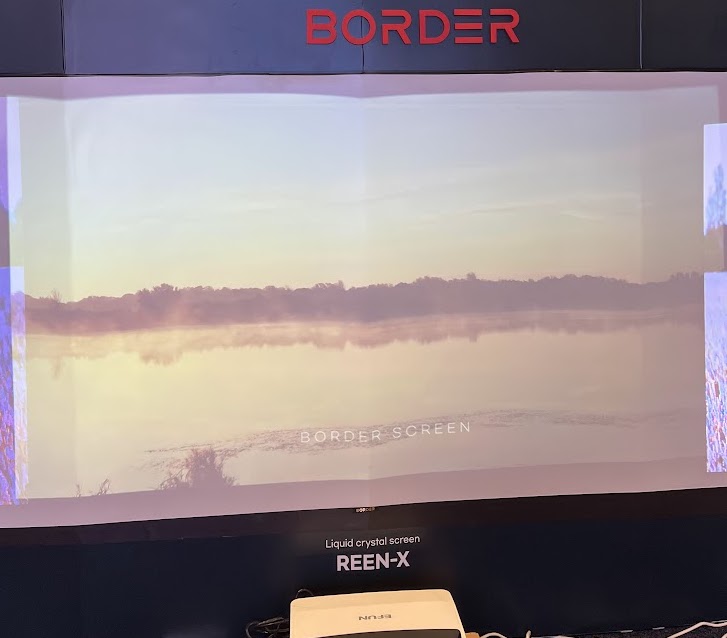
Korean Firm Marketing LCD In Film As Projection Screen
June 21, 2022 by Dave Haynes
One of my routines at trade shows – revived recently at InfoComm – is doing a big walk of an exhibit hall and going first to the back and sides, bypassing the big booths up front and in the middle.
That tends to avoid the crowds at the start of a day, but some of the more interesting tech tends to be in smaller stands at the edges – because the companies are often start-ups on small budgets or because the better locations were already booked by returning exhibitors.
There wasn’t all that much truly new at InfoComm in Las Vegas a couple of weeks. That was as expected and didn’t matter much to me. But I did come across vendors here and there who had things I’d not seen before, and kinda/sorta/maybe understood. Like a company called Border, from South Korea, that was way off in a corner of one of the halls, showing in a very minimal set-up what looked like thick sheets of plastic film hanging off rods.
The company uses the liquid crystal layer of TVs and pro displays as part of a floppy film that presents an alternative to conventional fabric projection screens or glass films. Those transparent displays used for dynamic chiller fridge doors and hologram-ish set-ups are based around LCD layers illuminated by LED edge lighting. In this case, the screen is illuminated and content made visible by the bright light coming from a projector. The image gets formed inside that LCD layer, and the output goes to 4K.
I suspect the main market is home cinema, but this could also be used for interior glass dividers in commercial and workspaces, turning the glass into digital signs, presentation displays or on-demand TV sets. The company says the screens have a 180-degree viewing cone, and that LCD strips can be tiled so that the display can scale up to meet a necessary dimension that fills the glass.
There is also a version that does switchable glass – meaning it can be see-through when not in use, but activated to opaque to create a display on glass. Sharp/NEC has something like that, called ActiveScene.
As with conventional fabric screens, Border’s tech works with any projector that will push out light. How good it looks will usually depend, in part, on brightness and projector distance. You can see in the main photo the company was trying to show what the film could do in a very brightly lit LVCC hall. You’ll notice the big projection companies find ways to reduce ambient lighting around their trade show stands.
Maybe this is not entirely new. Don’t know. Transparent LCD has been around for a decade or more, but I have only seen it associated with retail merchandising displays and those virtual presence set-ups.
The company associated with Border also sells dry erase marker board pens, so this may well be the case of a company re-selling tech from another company, quite possibly one in China.
Whatever the case, it was something different at a trade show that on the digital signage side was predominantly about “ers” – like brighter, lighter, easier, skinnier, cheaper and faster.



Leave a comment